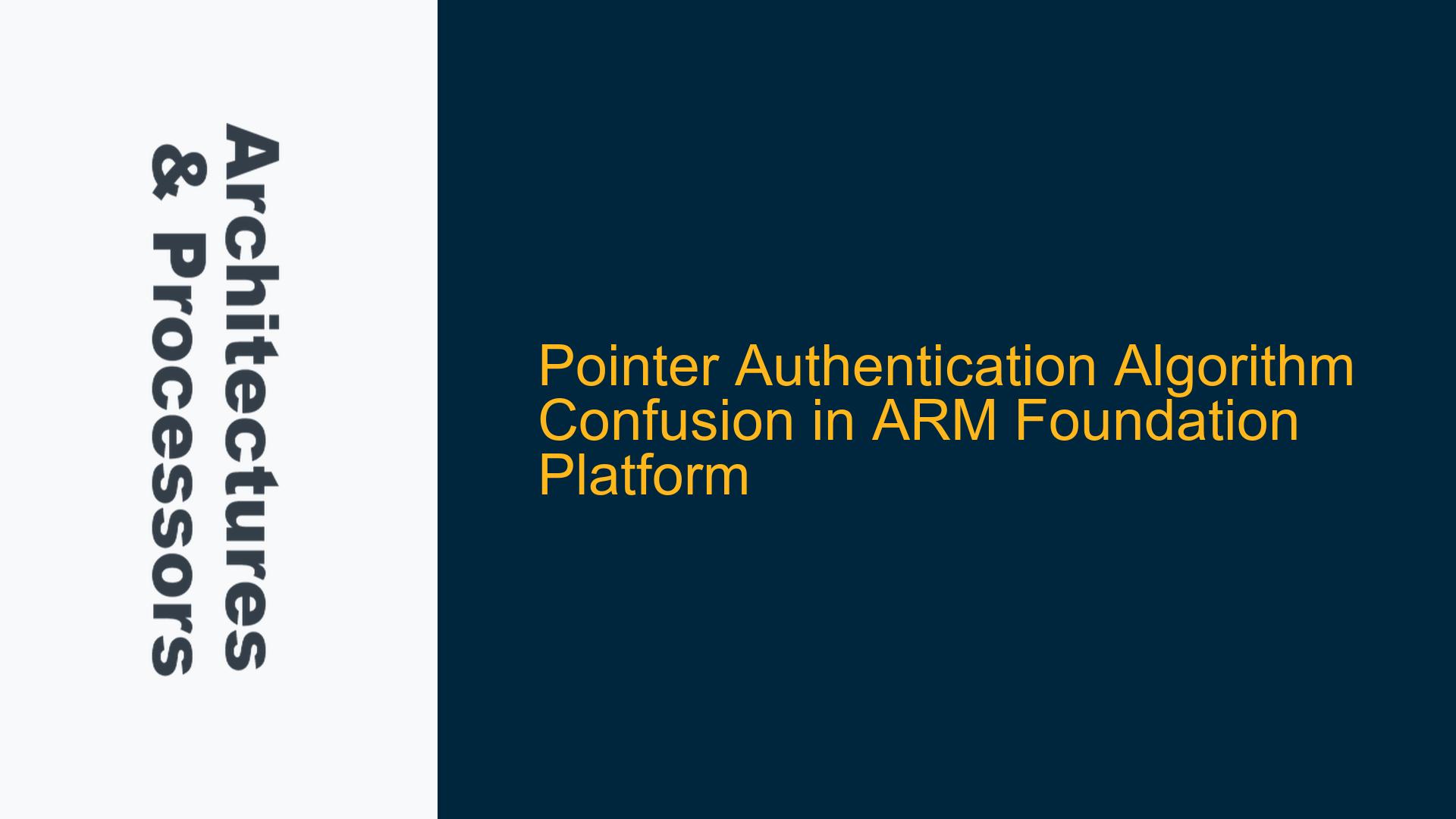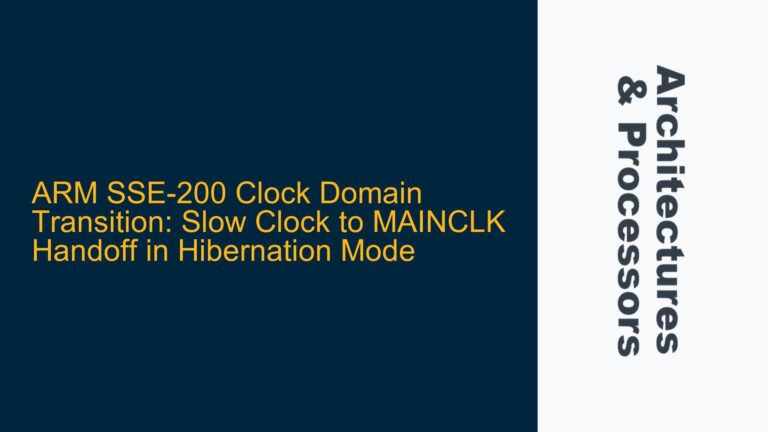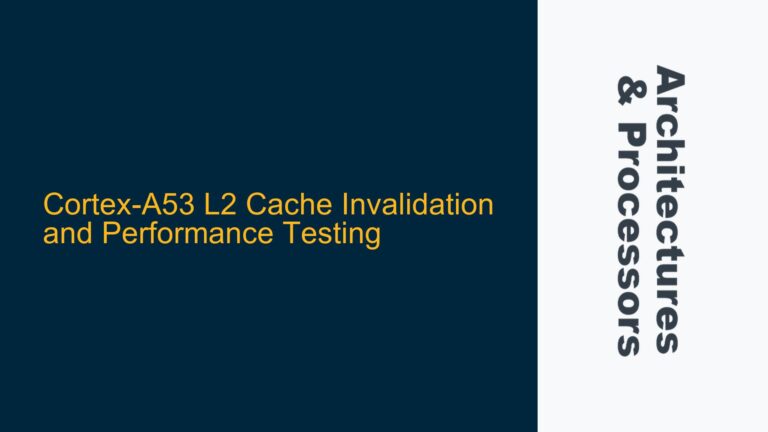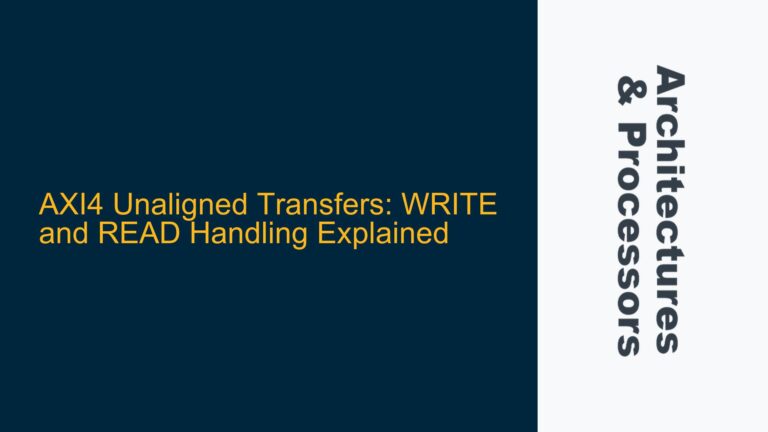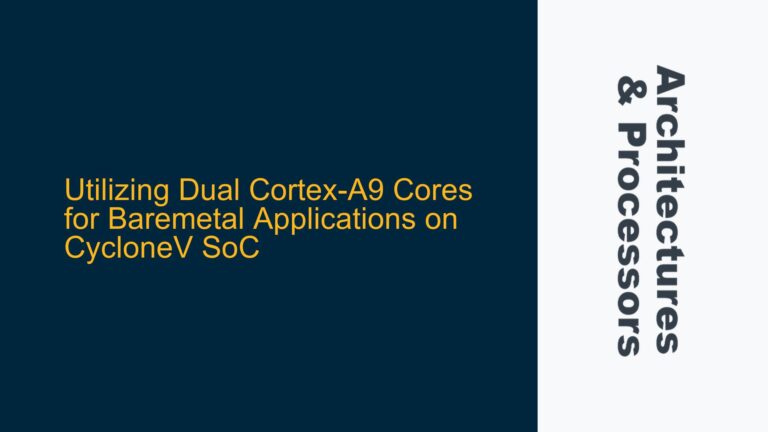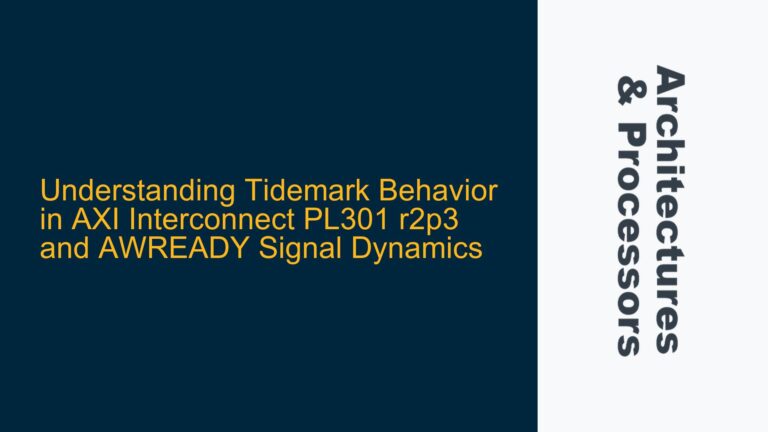ARM Foundation Platform’s Pointer Authentication Algorithm Configuration
The ARM Foundation Platform is a critical tool for developers and verification engineers working on ARM-based SoCs. It provides a reference environment for testing and validating ARM architectures, including advanced features like pointer authentication. Pointer authentication is a security feature introduced in ARMv8.3-A, designed to mitigate return-oriented programming (ROP) and jump-oriented programming (JOP) attacks by signing and authenticating pointers using cryptographic algorithms. However, the implementation of pointer authentication in the ARM Foundation Platform has raised questions regarding the supported algorithms and their configurability.
The ARM Architecture Reference Manual (ARM ARM) specifies that pointer authentication can use either the QARMA5 algorithm or an implementation-defined (IMP DEF) algorithm. These options are mutually exclusive, meaning a platform should support only one of them. However, the ARM Foundation Platform appears to configure both options simultaneously, as indicated by the value of the ID_AA64ISAR_EL1 register (0011111110211102). This register field indicates support for an IMP DEF algorithm for both instruction and data pointer authentication. This configuration has led to confusion, as it seemingly contradicts the ARM ARM’s exclusivity clause.
The primary issue revolves around understanding the specific algorithm used in the IMP DEF case and whether this configuration is intentional or a misalignment with the ARM ARM. Additionally, the configurability of the algorithm within the ARM Foundation Platform is unclear, raising questions about how developers can tailor the platform to their specific needs.
Misalignment Between ARM ARM and Foundation Platform Implementation
The confusion stems from the apparent misalignment between the ARM ARM’s specification and the ARM Foundation Platform’s implementation. According to the ARM ARM, the ID_AA64ISAR_EL1 register’s fields for pointer authentication (bits 7:4 for instruction pointers and bits 11:8 for data pointers) should indicate support for either QARMA5 or an IMP DEF algorithm, but not both. However, the ARM Foundation Platform sets these fields to values that suggest support for an IMP DEF algorithm, without explicitly stating which algorithm is used.
The QARMA5 algorithm is a well-documented, cryptographically secure algorithm designed for pointer authentication. It provides a balance between security and performance, making it suitable for a wide range of applications. On the other hand, IMP DEF algorithms are platform-specific and may vary in their cryptographic properties and performance characteristics. The use of an IMP DEF algorithm in the ARM Foundation Platform introduces uncertainty, as developers may not know whether the algorithm meets their security and performance requirements.
Furthermore, the ARM Foundation Platform’s documentation does not provide clear guidance on how to configure or switch between algorithms. This lack of clarity complicates the development and verification process, as engineers must rely on trial and error or external resources to determine the platform’s behavior.
Resolving Algorithm Ambiguity and Configuring Pointer Authentication
To address the ambiguity surrounding the pointer authentication algorithm in the ARM Foundation Platform, developers and verification engineers can take several steps to clarify the platform’s behavior and configure it to meet their needs.
First, it is essential to consult the ARM Foundation Platform’s documentation and release notes for any updates or clarifications regarding pointer authentication. ARM frequently updates its platforms to align with the latest architectural specifications, and these updates may include changes to the supported algorithms or their configurability.
Second, developers can analyze the ID_AA64ISAR_EL1 register’s value to determine the platform’s supported features. In this case, the value 0011111110211102 indicates support for an IMP DEF algorithm for both instruction and data pointer authentication. To identify the specific algorithm used, developers can refer to the platform’s source code or contact ARM support for clarification. For example, in QEMU, the IMP DEF algorithm is implemented as XXH64, a non-cryptographic hash function optimized for speed. While this algorithm may not provide the same level of security as QARMA5, it offers significant performance advantages in emulation environments.
Third, if the ARM Foundation Platform does not provide a built-in mechanism for configuring the pointer authentication algorithm, developers can explore custom modifications to the platform’s source code. This approach requires a deep understanding of the platform’s architecture and may involve modifying the CPU model or adding new configuration options. However, it allows developers to tailor the platform to their specific requirements, ensuring compatibility with their security and performance goals.
Finally, developers should consider the implications of using an IMP DEF algorithm in their verification and testing processes. While the ARM Foundation Platform’s IMP DEF algorithm may be suitable for certain use cases, it may not meet the security requirements of all applications. In such cases, developers may need to supplement their testing with additional tools or platforms that support the QARMA5 algorithm or other cryptographic methods.
By following these steps, developers can resolve the ambiguity surrounding the pointer authentication algorithm in the ARM Foundation Platform and configure it to meet their specific needs. This process ensures that the platform provides a reliable and secure environment for developing and verifying ARM-based SoCs.
In summary, the ARM Foundation Platform’s implementation of pointer authentication introduces ambiguity regarding the supported algorithms and their configurability. By consulting the platform’s documentation, analyzing the ID_AA64ISAR_EL1 register, and exploring custom modifications, developers can clarify the platform’s behavior and tailor it to their requirements. This approach ensures that the platform remains a valuable tool for developing and verifying ARM-based SoCs, even in the face of architectural complexities and evolving security requirements.
